Sravan Reddy Chintareddy
Federated Learning-based Collaborative Wideband Spectrum Sensing and Scheduling for UAVs in UTM Systems
Jun 03, 2024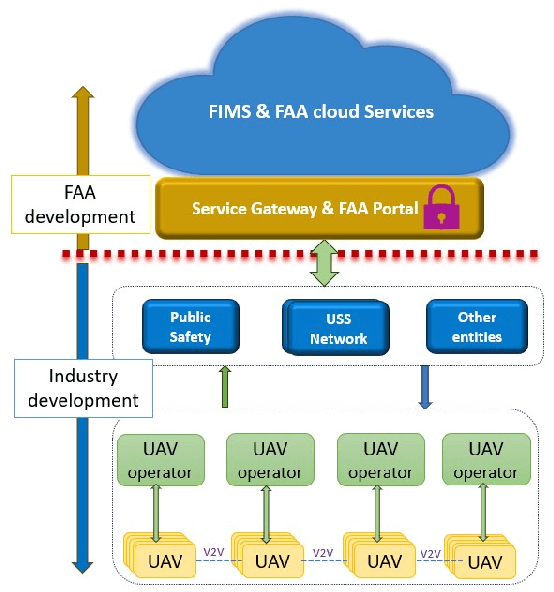
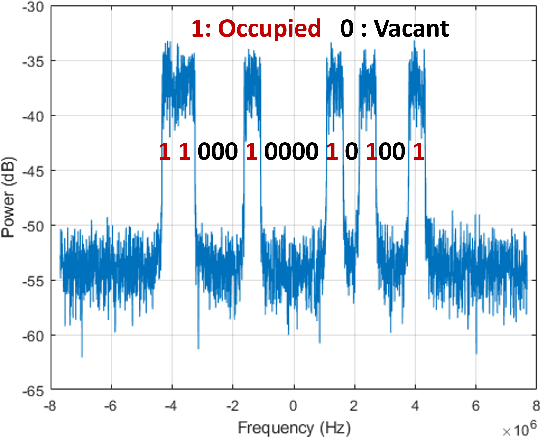


Abstract:In this paper, we propose a data-driven framework for collaborative wideband spectrum sensing and scheduling for networked unmanned aerial vehicles (UAVs), which act as the secondary users (SUs) to opportunistically utilize detected "spectrum holes". Our overall framework consists of three main stages. Firstly, in the model training stage, we explore dataset generation in a multi-cell environment and training a machine learning (ML) model using the federated learning (FL) architecture. Unlike the existing studies on FL for wireless that presume datasets are readily available for training, we propose a novel architecture that directly integrates wireless dataset generation, which involves capturing I/Q samples from over-the-air signals in a multi-cell environment, into the FL training process. Secondly, in the collaborative spectrum inference stage, we propose a collaborative spectrum fusion strategy that is compatible with the unmanned aircraft system traffic management (UTM) ecosystem. Finally, in the spectrum scheduling stage, we leverage reinforcement learning (RL) solutions to dynamically allocate the detected spectrum holes to the secondary users. To evaluate the proposed methods, we establish a comprehensive simulation framework that generates a near-realistic synthetic dataset using MATLAB LTE toolbox by incorporating base-station~(BS) locations in a chosen area of interest, performing ray-tracing, and emulating the primary users channel usage in terms of I/Q samples. This evaluation methodology provides a flexible framework to generate large spectrum datasets that could be used for developing ML/AI-based spectrum management solutions for aerial devices.
Collaborative Wideband Spectrum Sensing and Scheduling for Networked UAVs in UTM Systems
Aug 09, 2023

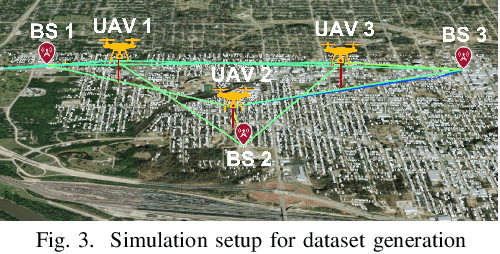
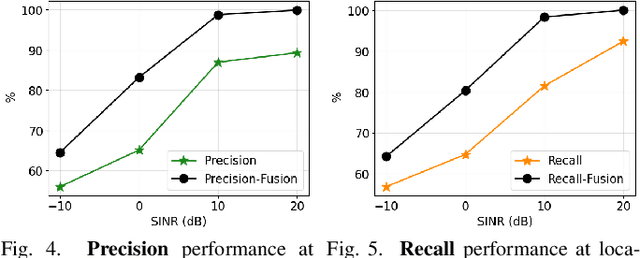
Abstract:In this paper, we propose a data-driven framework for collaborative wideband spectrum sensing and scheduling for networked unmanned aerial vehicles (UAVs), which act as the secondary users to opportunistically utilize detected spectrum holes. To this end, we propose a multi-class classification problem for wideband spectrum sensing to detect vacant spectrum spots based on collected I/Q samples. To enhance the accuracy of the spectrum sensing module, the outputs from the multi-class classification by each individual UAV are fused at a server in the unmanned aircraft system traffic management (UTM) ecosystem. In the spectrum scheduling phase, we leverage reinforcement learning (RL) solutions to dynamically allocate the detected spectrum holes to the secondary users (i.e., UAVs). To evaluate the proposed methods, we establish a comprehensive simulation framework that generates a near-realistic synthetic dataset using MATLAB LTE toolbox by incorporating base-station~(BS) locations in a chosen area of interest, performing ray-tracing, and emulating the primary users channel usage in terms of I/Q samples. This evaluation methodology provides a flexible framework to generate large spectrum datasets that could be used for developing ML/AI-based spectrum management solutions for aerial devices.
QoE-Centric Multi-User mmWave Scheduling: A Beam Alignment and Buffer Predictive Approach
Jul 01, 2022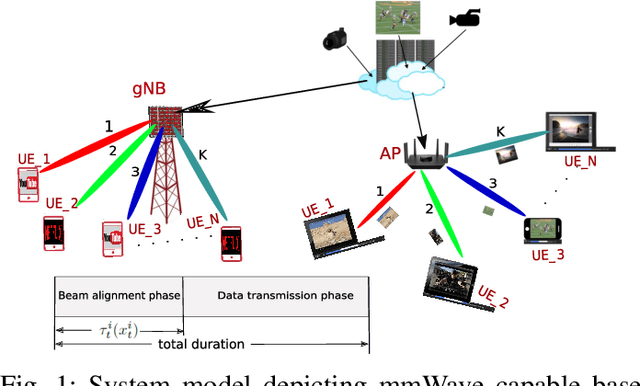
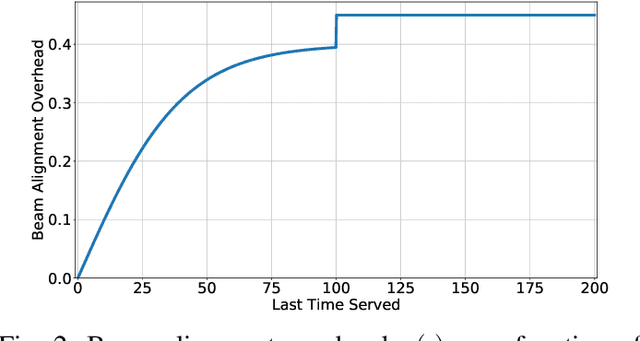


Abstract:In this paper, we consider the multi-user scheduling problem in millimeter wave (mmWave) video streaming networks, which comprise a streaming server and several users, each requesting a video stream with a different resolution. The main objective is to optimize the long-term average quality of experience (QoE) for all users. We tackle this problem by considering the physical layer characteristics of the mmWave network, including the beam alignment overhead due to pencil-beams. To develop an efficient scheduling policy, we leverage the contextual multi-armed bandit (MAB) models to propose a beam alignment overhead and buffer predictive streaming solution, dubbed B2P-Stream. The proposed B2P-Stream algorithm optimally balances the trade-off between the overhead and users' buffer levels and improves the QoE by reducing the beam alignment overhead for users of higher resolutions. We also provide a theoretical guarantee for our proposed method and prove that it guarantees a sub-linear regret bound. Finally, we examine our proposed framework through extensive simulations. We provide a detailed comparison of the B2P-Stream against uniformly random and Round-robin (RR) policies and show that it outperforms both of them in providing a better QoE and fairness. We also analyze the scalability and robustness of the B2P-Stream algorithm with different network configurations.
 Add to Chrome
Add to Chrome Add to Firefox
Add to Firefox Add to Edge
Add to Edge